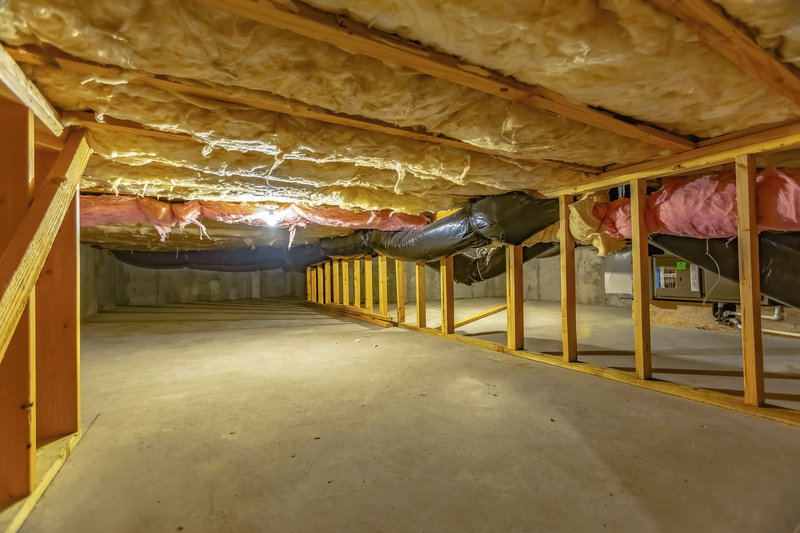Crawl space insulation is a crucial component of home energy efficiency, particularly in regions like Houston, where extreme temperatures can significantly impact indoor comfort and utility costs. Insulating the crawl space beneath a home not only helps regulate indoor temperatures but also mitigates moisture issues and improves overall air quality, making it a worthwhile investment for homeowners seeking to enhance their living environment to get Energy efficiency.
Importance for Energy Efficiency
Crawl space insulation plays a pivotal role in improving energy efficiency by creating a thermal barrier between the ground and the living space above. Without adequate insulation, heat can easily transfer through the floor, causing HVAC systems to work harder to maintain desired temperatures. By insulating the crawl space, homeowners can reduce energy consumption and lower heating and cooling bills, ultimately leading to long-term savings.
Unique Challenges in Crawl Space Insulation
Insulating a crawl space presents unique challenges compared to other areas of the home due to limited access, moisture issues, and potential pest infestations. Addressing these challenges requires careful planning and implementation to ensure effective insulation and long-term performance.
Benefits Beyond Energy Efficiency
While energy efficiency is a primary motivation for crawl space insulation, it also offers additional benefits that contribute to overall home comfort and structural integrity. Insulating the crawl space can help prevent moisture-related issues such as mold growth, wood rot, and structural damage, as well as improve indoor air quality by reducing the infiltration of outdoor pollutants and allergens.
Assessing the Crawl Space
Before proceeding with crawl space insulation, it is essential to conduct a thorough assessment to identify existing insulation, moisture issues, and ventilation needs.
Inspection for Existing Insulation
The first step in assessing the crawl space is to determine if any existing insulation is present and evaluate its condition. Insulation materials such as fiberglass batts or foam boards may degrade over time due to moisture exposure or pest activity, necessitating replacement or additional insulation measures.
Identifying Moisture Issues
Moisture is a common concern in crawl spaces, particularly in humid climates like Houston. Signs of moisture issues include water stains, mold growth, musty odors, and wood rot. Identifying and addressing the source of moisture is critical before proceeding with insulation to prevent future damage and ensure the effectiveness of the insulation.
Evaluating Ventilation Needs
Proper ventilation is essential for maintaining healthy indoor air quality and preventing moisture buildup in the crawl space. Assessing the existing ventilation system and determining if additional vents or fans are needed to promote airflow and reduce humidity levels is essential for successful crawl space insulation.
Types of Crawl Space Insulation
Several insulation materials are suitable for crawl space applications, each offering unique advantages in terms of performance, installation ease, and cost-effectiveness.
Fiberglass Batt Insulation
Fiberglass batt insulation is a common choice for crawl space insulation due to its affordability and relatively straightforward installation process. However, it may be prone to moisture absorption and compression over time, making proper moisture management essential for maintaining its effectiveness.
Spray Foam Insulation
Spray foam insulation offers superior thermal performance and air sealing properties, making it an ideal choice for crawl spaces. Its ability to expand and conform to irregular surfaces ensures a seamless insulation barrier, while its moisture-resistant properties help prevent mold growth and moisture-related issues.
Rigid Foam Board Insulation
Rigid foam board insulation is another option for crawl space insulation, offering excellent thermal resistance and moisture resistance. Its lightweight and easy-to-handle panels make it suitable for DIY installation, while its durability ensures long-lasting performance in demanding crawl space environments.
Installation Process
Proper installation is critical for maximizing the effectiveness of crawl space insulation and ensuring long-term energy savings and comfort.
Preparing the Crawl Space
Before installing insulation, the crawl space should be cleared of debris, moisture, and pests. Any existing insulation materials should be removed or replaced, and any structural issues such as leaks or foundation cracks should be addressed to prevent future damage.
Installing the Insulation
Once the crawl space is prepared, insulation can be installed using the chosen materials and techniques. Care should be taken to seal all gaps, seams, and penetrations to minimize air leakage and ensure maximum thermal efficiency. For spray foam insulation, professional installation may be recommended to ensure proper application and coverage.
Sealing Air Leaks and Gaps
In addition to insulation, sealing air leaks and gaps in the crawl space is essential for preventing energy loss and moisture infiltration. This may involve caulking gaps around pipes and ducts, sealing cracks in the foundation walls, and installing weatherstripping around access doors and vents to create a tight thermal envelope.
Maintenance and Longevity
Regular maintenance and monitoring are essential for preserving the effectiveness of crawl space insulation and preventing potential issues.
Monitoring Moisture Levels
Periodic monitoring of moisture levels in the crawl space is essential for detecting and addressing any moisture-related issues promptly. This may involve using a moisture meter to measure humidity levels and conducting visual inspections for signs of water intrusion or condensation.
Addressing Pest Control
Pest infestations can compromise the integrity of crawl space insulation and pose health risks to occupants. Implementing pest control measures such as sealing entry points, removing food sources, and installing traps or baits can help prevent infestations and protect the insulation from damage.
Periodic Inspection and Upkeep
Regular inspections of the crawl space insulation should be conducted to ensure it remains in good condition and performing optimally. This may involve checking for signs of damage, compression, or deterioration and addressing any issues promptly to maintain energy efficiency and indoor comfort.
In conclusion, crawl space insulation is a critical component of home energy efficiency and indoor comfort, particularly in regions like Houston with extreme temperatures and humidity levels. By understanding the importance of crawl space insulation, assessing the crawl space for existing conditions, selecting the appropriate insulation materials, and ensuring proper installation and maintenance, homeowners can create a more comfortable, energy-efficient living environment and enjoy long-term savings on utility costs.

